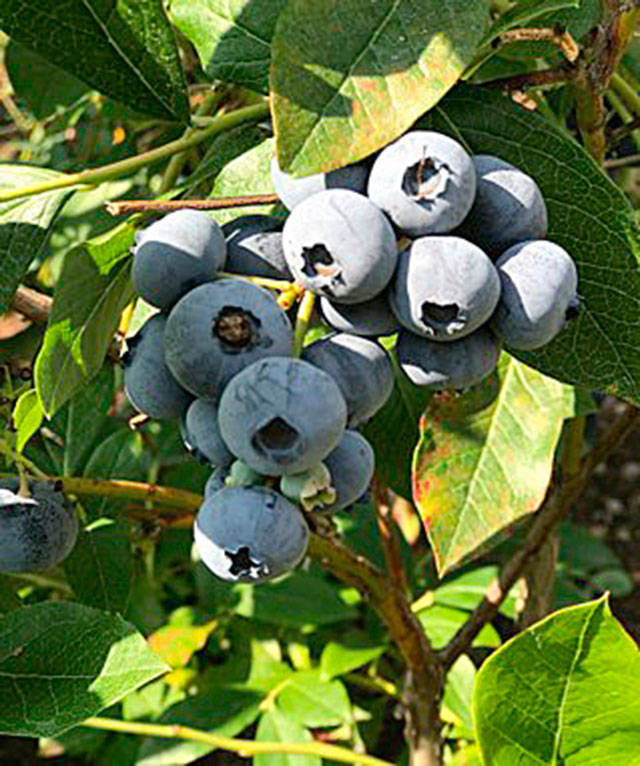A mature blueberry bush typically produces 12 to 18 pounds of blueberries each season. A number of circumstances, however, can result in less than optimal berry production: including:
• Growing varieties that are poorly adapted to our climate
• Insufficient sun exposure
• Poor pollinator activity during bloom
• A late frost that damaged flowers or young fruit, and
• A heavy crop the previous year that reduced fruit bud formation for the current season.
By far the most common causes of poor blueberry production are inadequate soil acidity and improper pruning.
Soil acidity (or lack thereof)
Blueberries need a soil pH of 4.5 to 5.5 to be healthy enough to produce a good crop. If the soil pH is much above 5.5, the bush will not be able to absorb the nutrients it needs to be healthy and will not produce much (if any) fruit.
It is best to test your soil pH and amend it before planting so you can work an acidifying agent into the root zone (top 8 to 12 inches of soil). But you can apply acidifiers to the soil surface after planting and “get some relief.”
Elemental sulfur (sometimes labelled as flowers of sulfur) is the most cost-effective acidifying agent. Sawdust, sphagnum peat and ammonium sulfate are weak acidifiers and unlikely to be adequate if the soil pH is high enough to affect productivity; contrary to popular opinion, neither coffee grounds nor pine needles do much to acidify soil.
Because the amount of sulfur needed depends on the starting pH and soil texture, check your soil pH before applying sulfur. About 2 cups of sulfur will be needed per plant to lower the pH by one unit; soils with more clay in them require more sulfur to achieve the same acidification.
Because too much sulfur can damage the plant, you should apply the sulfur a little at a time. Start by spreading 1/3 cup of sulfur in the drip zone of the plant. Lightly scratch the sulfur into the soil so as not to damage the plant’s roots. Repeat on a monthly basis until the total recommended amount of sulfur has been applied.
Because sulfur requires microbial action to acidify the soil, it works fastest when applied from spring to autumn, when the soil is warmer. The more finely ground the sulfur is, the better.
Pruning
Blueberries produce on “one-year-old” wood. That means that the first summer that a cane emerges, it is not productive. The following year that cane will produce a few berries and side branches. Those side branches produce berries the following year as well as more (secondary) branches. The secondary branches produce berries the year after that as well as more side branches.
As the number of side branches increases, productivity of the cane climbs, but after 3 or 4 years berry production on that cane falls.
To make matters worse, those older canes inhibit the bush from putting on new, strong canes that will start the berry-producing cycle all over. Without pruning, your bush will become nothing but older canes, canes that do not produce well.
To maintain consistent productivity, you must prune your bushes on a yearly basis. The goal is to have a total of 8 to 12 canes with equal numbers of one-, two-, three-, and four-year-old canes. Having canes of different ages, none older than 5 years, insures that some are at their peak of productivity while others are ramping up for maximal production in future years.
When pruning, follow a systematic approach. (See Sidebar.) Remove canes to the base of the plant or a strong, younger side branch. Do not tip prune unless your goal is to prevent overbearing.
Don’t let the blueberry blues get you down. Take steps now to make next year’s harvest one that you will remember.


